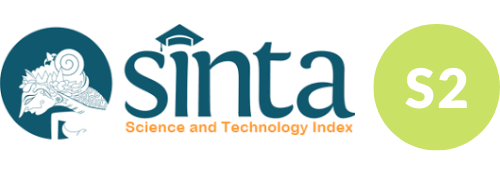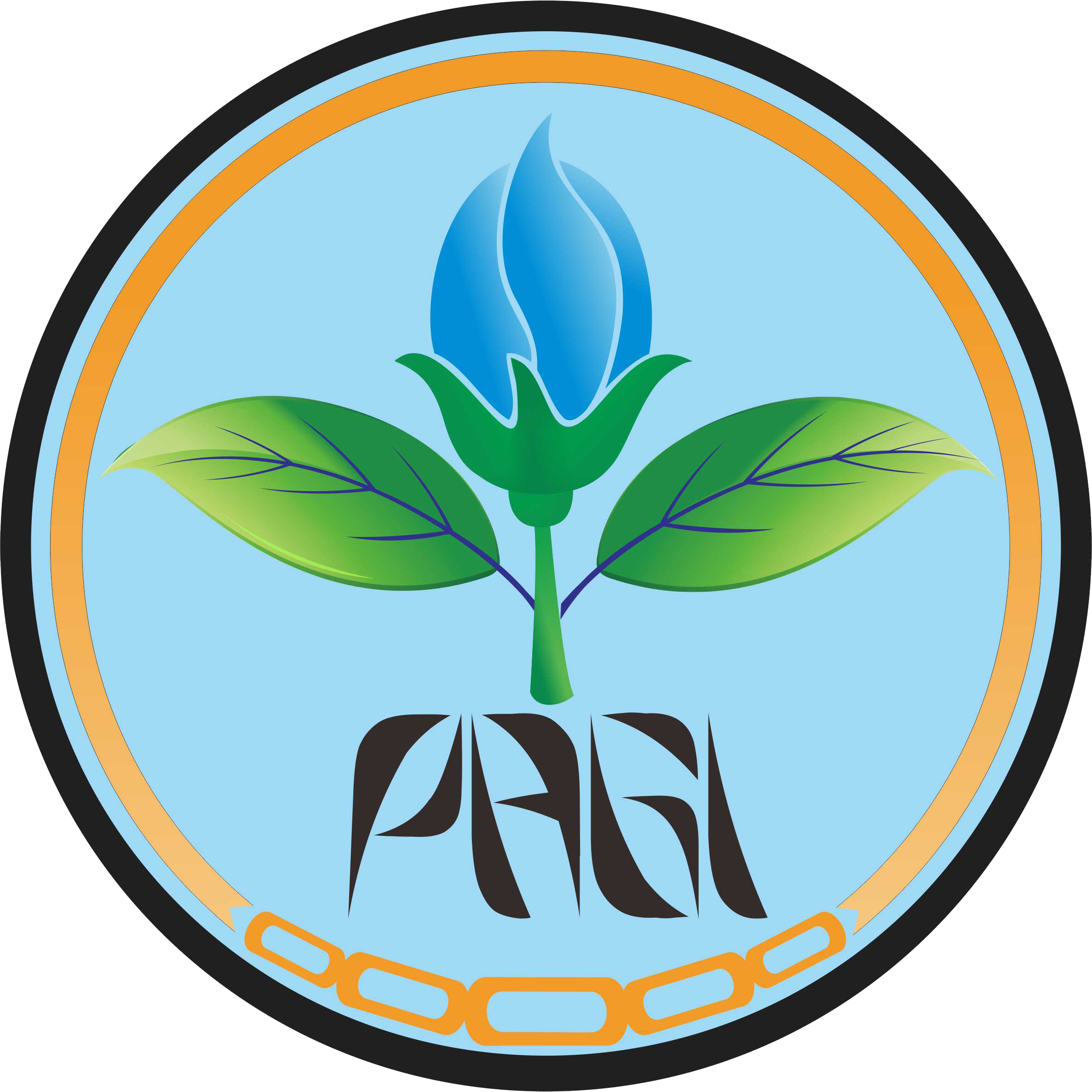Skrining dan Efektivitas Metabolit Sekunder Mikania micrantha pada Gulma Jajagoan serta Dampaknya terhadap Padi Sawah
Abstract
Secondary metabolites from Mikania micrantha could be expected to control barnyardgrass (Echinochloa crus-galli) characteristics and have an effect on lowland rice. This research was aimed to screening of secondary metabolites in M. micrantha extract, obtaining the greater extract concentration in suppressing the barnyardgrass growth, and determine the impact on the lowland rice characteristics. This method used was Randomized Completely Block Design in non-factorial within the concentration rates of M. micrantha extract using ethanol 96% (0%; 20%; 40%; 60%; 80%; 100%, and herbicide 2,4-D dimethylamine at the dose of 1 l ha-1 as a comparison). Lowland rice and barnyardgrass characteristics were analyzed using F-test and followed by DMRT at 5% with SPSS software. The result showed that M. micrantha had secondary metabolites include alkaloids, flavonoids, and tannins. The concentration at 20 to 100% significantly decreased the fresh- and dry-weight of barnyardgrass with the highest suppressing found in 60% concentration by 65.91% and 67.92%, respectively compared to un-sprayed. The concentrations at 20% and 60% were classified as inhibiting the growth biomass of barnyardgrass. The concentrations at 20%, 60%, and 80% can still encourage the tillers growth of lowland rice. An extract concentration of M. micrantha at 20% can be applied to inhibit the growth of barnyardgrass biomass and stimulate the lowland rice tillers.
Keywords
Full Text:
PDF(ID)References
Anwar R, Hasibuan I. 2011. Uji allelopati potensial terhadap perkecambahan gulma Echinochloa cruss-galli (L.) Beauv. J Agroqua Media Inf Agron dan Budid Perair. 9(2):53–58.
Baral B, Maharjan BL. 2011. Antagonistic characteristics and phytochemical screening of invasive alien species of Nepal Himalaya. Int J Pharm Biol Arch. 2(5):1444–1450.
Clay SA, Kleinjan J, Clay DE, Forcella F, Batchelor W. 2005. Growth and fecundity of several weed species in corn and soybean. Agron J. 97(1):294–302. doi:doi.wiley.com/10.2134/agronj2005.0294a.
Dadang, Prijono D. 2011. Pengembangan teknologi formulasi insektisida nabati untuk pengendalian hama sayuran dalam upaya menghasilkan produk sayuran sehat. J Ilmu Pertan Indones. 16(2):100–111.
Fernandes A, Maharani R, Sunarta S, Rayan R. 2018. Karakteristik kimia dan potensi daun tanaman akar bulou (Mikania micrantha Kunth) sebagai obat luka tradisional. J Penelit Ekosist Dipterokarpa. 4(2):109–116. doi:10.20886/jped.2018.4.2.109-116.
Gibson KD, Fischer AJ, Foin TC, Hill JE. 2002. Implications of delayed Echinochloa spp. germination and duration of competition for integrated weed management in water-seeded rice. Weed Res. 42(5):351–358. doi:10.1046/j.1365-3180.2002.00295.x.
Grisi PU, Ranal MA, Gualtieri SCJ, Santana DG. 2012. Allelopathic potential of Sapindus saponaria L. leaves in the control of weeds. Acta Sci Agron. 34(1):1-9. doi:10.4025/actasciagron.v34i1.11598.
Guntoro D, Chozin MA, Santosa E, Tjitrosemito S, Burhan AH. 2009. Kompetisi antara ekotipe echinochloa crus-galli pada beberapa tingkat populasi dengan padi sawah. J Agron Indones. 37(3):202–208.
Ismail BS, Chong T-V. 2002. Effects of aqueous extracts and decomposition of Mikania micrantha H.B.K. debris on selected agronomic crops. Weed Biol Manag. 2(1):31–38. doi:10.1046/j.1445-6664.2002.00045.x.
Jalaludin A, Yu Q, Powles SB. 2015. Multiple resistance across glufosinate, glyphosate, paraquat and ACCase-inhibiting herbicides in an Eleusine indica population. Weed Res. 55(1):82–89. doi:10.1111/wre.12118.
Junaedi A, Chozin MA, KIM KH. 2006. Perkembangan terkini kajian alelopati. HAYATI J Biosci. 13(2):79–84. doi: 10.1016/S1978-3019(16)30386-2.
Kholifah N, Syaifudin EA, Sofian. 2018. Application of kirinyuh extracts (Chromolaena odorata (L.) R.M. King and H.E. Rob.) to germination and growth of jawan grass weed (Echinochloa cruss-galli). J Agroekoteknologi Trop Lembab. 1(1):67–76. doi:10.35941/jatl.1.1.2018.1504.67-76.
Kong CH, Wang P, Gu Y, Xu XH, Wang ML. 2008. Fate and impact on microorganisms of rice allelochemicals in paddy soil. J Agric Food Chem. 56(13):5043–5049. doi:10.1021/jf8004096.
Kong CH, Zhao H, Xu XH, Wang P, Gu Y. 2007. Activity and allelopathy of soil of flavone O -glycosides from rice. J Agric Food Chem. 55(15):6007–6012. doi:10.1021/jf0703912.
Kristanto BA. 2006. Perubahan karakter tanaman jagung (Zea mays L.) akibat alelopati dan persaingan teki (Cyperus rotundus L.). J Pengemb Peternak Trop. 3(31):189–194.
Latha M, Jyothilakshmi M, Jyothis M. 2015. Antidermatophytic activity of Mikania micrantha Kunth: an invasive weed. Pharmacognosy Res. 7(5):20-25. doi:10.4103/0974-8490.157994.
Li J, Jin Z. 2010. Potential allelopathic effects of Mikania micrantha on the seed germination and seedling growth of Coix lacryma-jobi. Weed Biol Manag. 10(3):194–201. doi:10.1111/j.1445-6664.2010.00384.x.
Liu X, Tian F, Tian Y, Wu Y, Dong F, Xu J, Zheng Y. 2016. Isolation and identification of potential allelochemicals from aerial parts of Avena fatua L. and their allelopathic effect on wheat. J Agric Food Chem. 64(18):3492–3500. doi:10.1021/acs.jafc.5b05498.
Marambe B, Amarasinghe L. 2002. Propanil-resistant barnyardgrass [Echinochloa crus-galli (L.) Beauv.] in Sri Lanka: seedling growth under different temperatures and control. Weed Biol Manag. 2(4):194–199. doi:10.1046/j.1445-6664.2002.00068.x.
Pebriani, Linda R, Mukarlina. 2013. Potensi ekstrak daun sembung rambat (Mikania micrantha HBK) sebagai bioherbisida terhadap gulma maman ungu (Cleome rutidosperma DC) dan rumput bahia (Paspalum notatum Flugge). Protobiont. 2(2):32–38.
Perawati S, Andriani L, Pratiwi P. 2018. Aktivitas antibakteri ekstrak etanol daun sembung rambat (Mikania micrantha Kunth). Chempublish J. 3(2):40–45. doi:10.22437/chp.v3i2.5554.
Pérez-Amador MC, Ocotero VM, Balcazar RI, Jiménez FG. 2010. Phytochemical and pharmacological studies on Mikania micrantha HBK (Asteraceae). Phyton Int J Exp Bot. 79:77-80.
Rice EL. 1984. Allelopathy. 2nd ed. London: Academic Press, Inc.
Sahu A, Devkota A. 2013. Allelopathic effects of aqueous extract of leaves of Mikania Micrantha H.B.K. on seed germination and seedling growht of Oryza sativa L. and Raphanus sativus L. Sci World. 11(11):91–93. doi:10.3126/sw.v11i11.8559.
Saito K, Azoma K, Rodenburg J. 2010. Plant characteristics associated with weed competitiveness of rice under upland and lowland conditions in West Africa. F Crop Res. 116(3):308–317. doi:10.1016/j.fcr.2010.01.008.
Shajib MTI, Pedersen HA, Mortensen AG, Kudsk P, Fomsgaard IS. 2012. Phytotoxic effect, uptake, and transformation of biochanin a in selected weed species. J Agric Food Chem. 60(43):10715–10722. doi:10.1021/jf3023589.
Sunmonu TO, Van Staden J. 2014. Phytotoxicity evaluation of six fast-growing tree species in South Africa. South African J Bot. 90:101–106. doi:10.1016/j.sajb.2013.10.010.
Tampubolon K, Sihombing FN, Purba Z, Samosir STS, Karim S. 2018. Potensi metabolit sekunder gulma sebagai pestisida nabati di Indonesia. Kultivasi. 17(3):683–693. doi:10.24198/kultivasi.v17i3.18049.
Travlos IS, Economou G, Kanatas PJ. 2011. Corn and Barnyardgrass competition as influenced by relative time of weed emergence and corn hybrid. Agron J. 103(1):1–6. doi:10.2134/agronj2010.0245.
Umiyati U. 2019. Respon pertumbuhan gulma dan hasil tanaman jagung terhadap herbisida 276 g/l pada sistem tanam TOT. Agrotechnology Res J. 3(1):18–22. doi:10.20961/agrotechresj.v3i1.29248.
Usman, Purwoko BS, Syukur M, Guntoro DD. 2016. Toleransi galur harapan padi sawah (Oryza sativa L.) pada persaingan dengan gulma Echinochloa crus-galli. J Agron Indones. 44(2):111–118. doi:10.24831/jai.v44i2.13476.
Wei X, Huang H, Wu P, Cao H, Ye W. 2004. Phenolic constituents from Mikania micrantha. Biochem Syst Ecol. 32(11):1091–1096. doi:10.1016/j.bse.2004.04.013.
Williamson GB, Richardson D. 1988. Bioassays for allelopathy: Measuring treatment responses with independent controls. J Chem Ecol. 14(1):181–187. doi:10.1007/BF01022540.
Wilson MJ, Norsworthy JK, Scott RC, Gbur EE. 2014. Program approaches to control herbicide-resistant barnyardgrass (Echinochloa crus-galli) in Midsouthern United States rice. Weed Technol. 28(1):39–46. doi:10.1614/WT-D-13-00062.1.
Zhang M, Ling B, Kong C, Pang X, Liang G. 2003. Chemical components of volatile oil from Mikania micrantha and its biological activity on insects. J Appl Ecol. 14(1):93–96.
Refbacks
- There are currently no refbacks.






